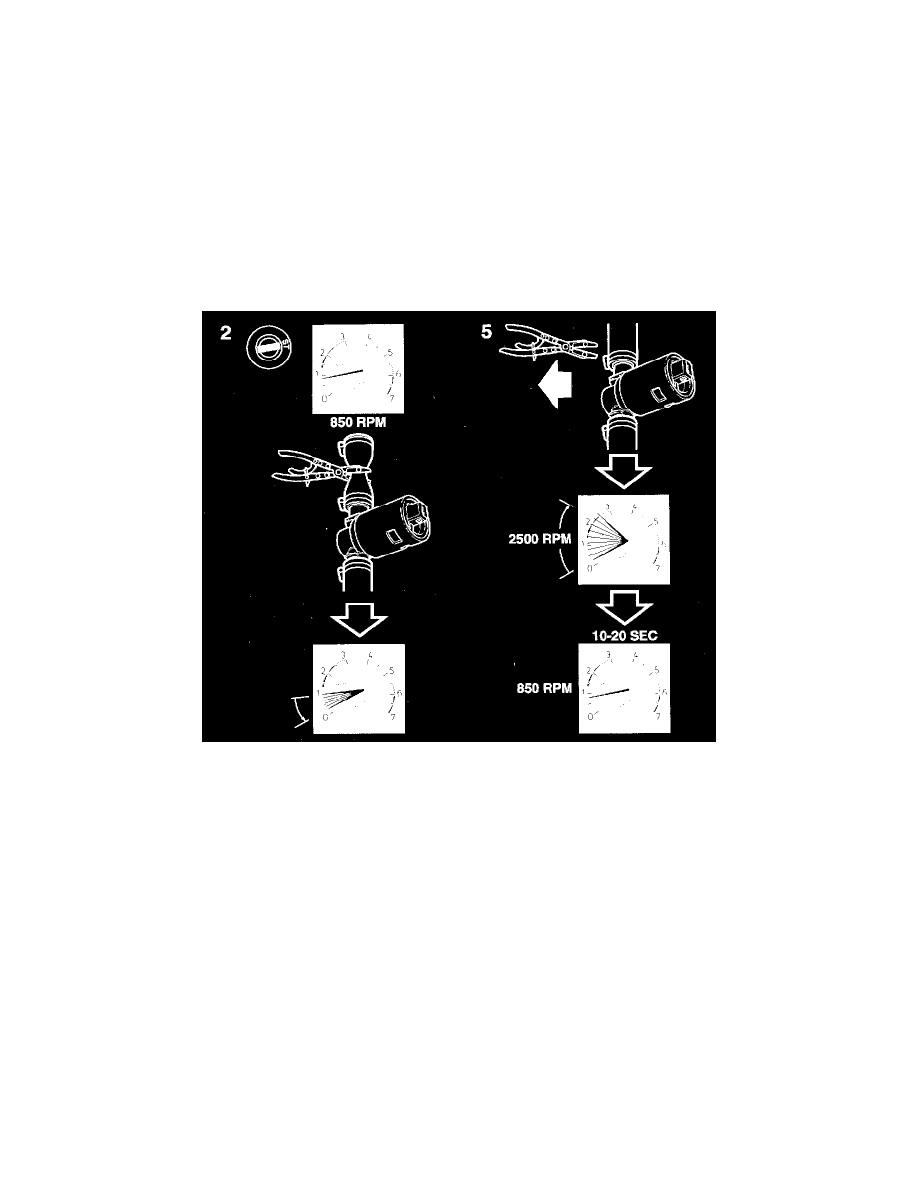9000 L4-1985cc 2.0L DOHC Turbo EFI (1987)

Idle Speed/Throttle Actuator - Electronic: Testing and Inspection
Checking The Idle Air Control Valve
Idling speed drops appreciably when the engine load is increased suddenly in connection with the engagement of a high current-consuming item of
equipment, such as the A/C, ACC, power steering, electrically heated rear window or the automatic transmission when a gear is selected.
Tools:
- Pliers
- ISAT scan tool
1 Checking for air leakage.
Start the engine and warm it up. Then run it at idling speed.
2 Restrict the flow of air through the idle air control valve by pinching the air hose with a pair of ph- ers. Idling speed should drop substantially. Do
not pinch the hose so hard that the engine stalls.
3 If engine speed drops, continue with point 5.
4 If engine speed does not drop, continue fault diagnosis by checking:
- Incorrectly adjusted throttle
- Air leakage (after the throttle), e.g. leaky purge valve on the emission canister.
5 Check the idle speed control function. Remove the air flow restriction. Idling speed should increase appreciably and then stabilize after 10 - 20
seconds at the normal idling speed of 850 rpm (engine warmed up).
6 If operation of idling speed control is OK, continue with point 18.
7 If it is not OK, continue with point 8 or 11, depending on which LH system the car has.
